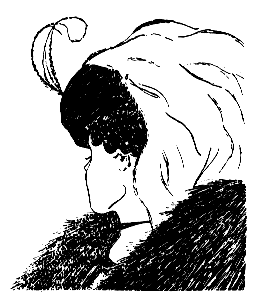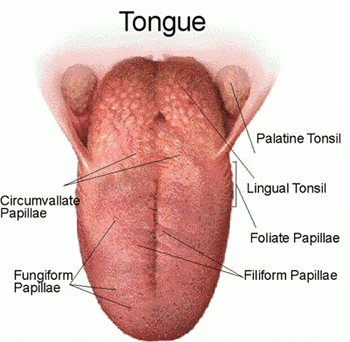The ten tasting biases that trick your senses: Recognize them and avoid them!
There is no wrong or right answer in wine tasting; however, a few biases in setting up the tasting or conducting the tasting can trick your senses, and therefore your overall evaluation and appreciation.
There are only two bias categories: the physiological biases triggered by your senses and the psychological ones, when your mind takes over your senses.
These errors are usually out of your control. If you fall into one of these "sensory illusions," you won't notice it. You will proceed as usual, and this is the scary part!
Is it a big deal? Well, it depends on what the wine tasting goals were. Here are some potential situations created by wine tasting biases.
The consequences may affect the outcomes of the tasting:
- you may disagree strongly with your fellow tasters about the sensory attributes differentiating the wines
- you may conclude on differences between two wines whereas they don't exist
- you may make the wrong decisions based on biased procedures (e.g., not to buy again, not to recommend to others)
The best you can do is to become aware and take all the actions required to minimize them the best you can.
Introducing Echo Show 5Our senses can play tricks
Your senses may misrepresent reality sometimes. It is difficult to illustrate a "sensory illusion" related to the sense of smell or taste. Let's make a parallel with visual illusions; I am sure you have seen many of them and have tricked by a few of them.
Here are two examples of illusions demonstrating how your senses treat the sensory information and may mislead your judgment.
- On the left figure, one can see a vase or two faces.
- On the right figure, one can see a young or old woman.
What can you see?


- On the left figure, one can see a vase or two faces.
- On the right figure, one can see a young or old woman.
And you?
1- Sensory adaption is a physiological bias.
One common physiological bias with beginners is sensory adaptation. It results in a decreased sensitivity of your sensory organs after repeated stimulation by the same smell or taste.
The graph below shows how taking repeated sniffs over a glass of wine decreases your perception of the overall aroma intensity of the wine. The aromas have not disappeared, but your nose has become saturated. Your brain tells you: I have already told you it smells strawberry, can we tackle something else, I am bored!

Read more on sensory adaptation.
2-Expectation is a trick from your mind.
The tasting leader introduces the tasting by: "Today, you are going to taste Sauvignon blanc wines from New Zealand." If you have studied wine appreciation or sommelier practices, or if you are an avid reader of wine reviews, you may know that Sauvignon blanc wines have typical grapefruit and tropical fruit aromas. The New Zealander wines tend to evoke grassy and asparagus aromas. Therefore you have some expectations.
Consequence: As an anxious taster, you will look for these aromas and may perceive sensations that may not exist in the particular wines you are tasting that day. You may not notice other smells, tastes, or mouthfeels because they are out of your defined consideration set.
Result: your tasting experience and notes are missing the point!
How to counter expectation errors? Do not try to know in advance what are the tasting details. The less you know, the more objective you are as a taster.
Good practice: Have your tasting samples presented blind, without any information whatsoever. Glasses are coded with two or 3-digit codes randomly chosen.
3- Halo effect.
When you start evaluating wine using a tasting sheet, you tend to review the list of suggested attributes one at a time. The halo of one characteristic may bias the rating of another aspect. For example, the evaluation of aroma intensity may influence the score of flavor intensity.
The halo effect is, unfortunately, occurring too often in wine appreciation practices. A typical situation is when, at the end of your evaluation sheet, you rate how much you liked the wine AND grade the wine quality from poor to excellent. The more you rate quality high, the more you tend to like the wine.
Is it a problem? Not really, except that some wines may be of excellent quality, and they are not just your preference.
To counter the halo effect: I recommend evaluating each aspect of the wine (i.e., smell, flavor, mouthfeel, and appearance) independently. What does it mean in an ideal world? It means to taste the same wine in different flights and with different codes to assess different sensory modalities.
That means a lot of glasses, but that's why you have a dishwasher nearby.
4- Stimulus bias.
This error tends to occur in professional wine tasting when, for example, you are asked to taste three samples and identify the odd sample (two samples are the same, one is different). This bias will happen if something else than the actual wine varies in the sample set. For example, these stimuli can be different glass shapes or different layouts for the wine glass arrangement in front of the tasters, different label shapes, or colors used to code the wine glasses.
To counteract the stimulus error: the tasting leader should make sure such failure does not happen:
- by using consistent glass shape and color,
- by labeling the glasses consistently.
5- Logical error.
This bias occurs when, in your mind, you associate two or more sensory perceptions because it's logical to you.
Examples:
- You smell lemon, and therefore the taste must be sour.
- You smell a white wine, but looking at its color, slightly orange, you start to perceive oxidized apple. Darker colors (orange, brown) in white wines tend to signal oxidation, a defect due to the wine exposition in its making or storage to too much oxygen (air) and leading to chemical reactions affecting the wine color, aroma, and taste. So in this case, the color biased your aroma perception because the orange color may be due to natural aging or other causes that should not lead to an oxidized aroma!
To counter the logical error: The tasting leader should mask wine color using colored glasses or colored lighting in the tasting area. And as for the halo effect, try to evaluate wine by smell independently from evaluating wine in the mouth.
6- Sample choice within a flight
I highly recommend to present the wines in different presentation order to every taster. It is contrary to the sommelier wisdom; however, here are the first two error examples due to the nature of the wines chosen in the flight.
- Contrast effect: In a flight of six wine samples, the tasting leader has included an old wine along with five wines from a recent vintage. Tasting the old wine after a series of young wines will create such a contrast that the rating of the former may be overestimated or underestimated. In a flight, it is better to have a variety of wine styles or ages (for example, three old and three young wine samples, presented in a random order) to minimize this effect.
- Group effect: the tasting includes four flights of Chardonnay: the first flight represents wine from bag-in-box. The second, Grand Crus from Burgundy. The tasting leader has chosen to present the series of bag in a box wine along with a Grand Cru. This poor grouping will probably lead to a lower rating of the Grand Cru, or vice versa!
7- Order of presentation of samples.
The other two cases are due to you, overthinking!
- Error of central tendency: "Here are three wine samples, which one do you prefer?" If the wines are not very different, more than 33% of the tasters will choose the middle sample, which is more than chance and may lead to the conclusion that the middle example is the preferred wine. The central tendency effect is our tendency to choose the middle sample when we are forced to choose one out of three. Try with your kids or friends (it always works!).
To minimize the central tendency: Randomize the presentation order among the wine tasters. More work, yes, but less biases and false conclusion - Position effect: if asked to rate your liking of a series of wine, the first sample will likely have the highest rating overall. So if we give the same order to every taster, we will probably bias the conclusions and state wrongly that the first sample was preferred. When I run consumer tests to make commercial decisions, I always give a dummy sample as the first sample to everyone, knowing that this sample will be overly rated. We discard the dummy sample data to focus on the wines of interest.
In all cases, I recommend to randomize the sample order among tasters.
8- Mutual suggestion.
The response of one taster can influence the opinion of other tasters, especially if he/she is more experienced or have a higher status in the company hierarchy.
This situation is why we recommend to let the tasters evaluate the wines independently; this means they take their notes and discuss afterward with the group. Even if mutual suggestion happens in the group discussion, the individual tasting notes are the ones to consider if it is a professional tasting where data are critical.
9- Leniency bias.
It is the tendency to give higher ratings for wines that you know, or to please the tasting leader. This error can happen a lot in professional tastings and especially tastings happening within one company evaluating its competitors. Tasters will be more lenient towards the company wines and will tend to give lower ratings to the other products.
10- Habituation.
This bias looks similar to sensory adaptation, but it is not the same phenomenon.
In tasting, this error leads tasters to give similar intensity ratings for a series of wine sensations that slowly increase or decrease. The stimulation is monotonous, this affects the taster's attention, and he or she gives the same score and may miss a different perception, just by (bad) habit. Habituation differs from adaptation, which is provoked by a decrease of sensitivity.
This bias will rarely happen in social wine tastings, where they tend to serve very different wines. However, as a wine professional, you may encounter this type of error when you start blending.
To counter habituation: I recommend having some unusual samples in the flights to awaken tasters' senses and break the risk.
Wine tasters experience these tasting biases unconsciously.
As a taster, you are not aware that these errors affect your tasting conclusions. You are an honest and objective taster. Even if you do your best to stay mindful of these biases, they will insidiously invite themselves when the tasting set up lacks rigor.
This reality is true for everyone, including the experts. I reckon to like better (and rate better) Sparkling wines coming from one of my favorite areas when I can see the label (expectation error). When I taste blind, without knowing and seeing cues, I have no expectations!
Home>Tasting Biases




